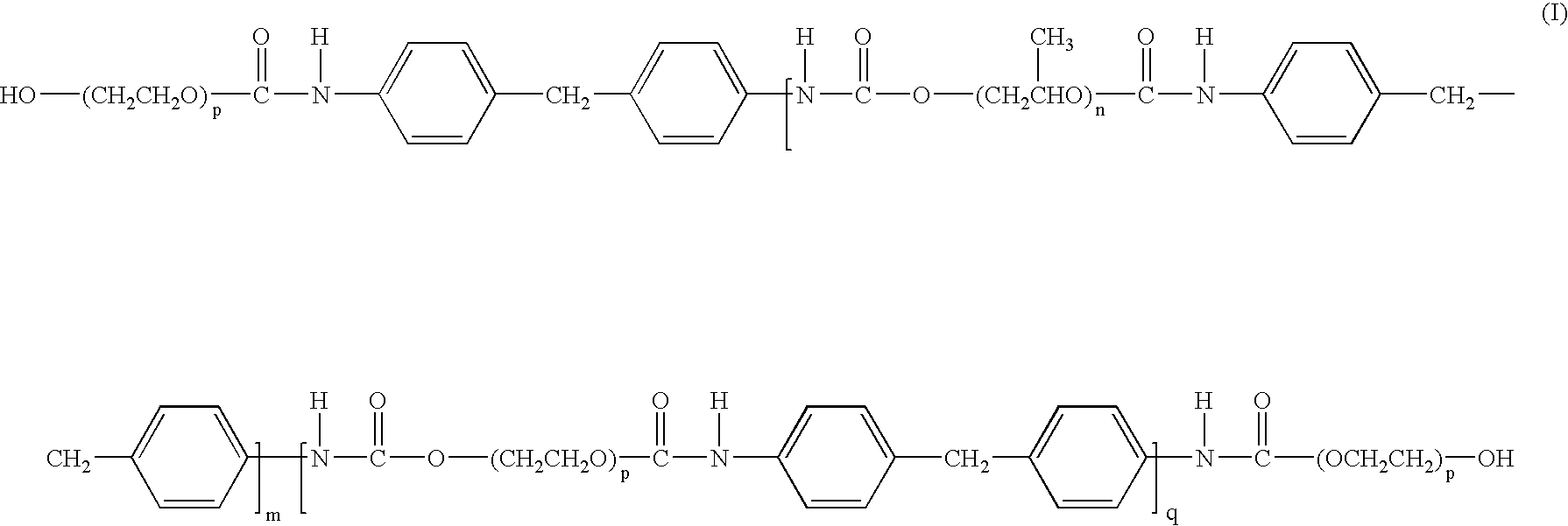Hydrophilic surface modifying macromolecules (H-phil SMM) and H-phil SMM blended membranes
a technology of hydrophilic surface and macromolecule, applied in the field of articles, can solve the problems of uncontrollable, undesirable, pitting and solubilization of surface morphology, and the loss of thermodynamically or physically stable surfaces, and achieve the effect of simple and inexpensiv
- Summary
- Abstract
- Description
- Claims
- Application Information
AI Technical Summary
Benefits of technology
Problems solved by technology
Method used
Image
Examples
example
H-phil SMM Synthesis:
[0072] A new surface modifying macromolecule (H-phil SMM) was synthesized by the following method. 7.5 g (0.03 moles) of vacuum distilled methylene di-phenylene 4,4′-diisocyanate (MDI) in 50 mL of degassed N,N-dimethylacetamide (DMAC) and 8.5 g (0.02 moles) of degassed polypropylene glycol (PPG) in 100 mL of DMAC were mixed in a 1 L Pyrex round bottom flask. MDI and PPG were allowed to react at 48-50° C. for 3 hours. Then, 0.02 moles of degassed polyethylene glycol (PEG) in 50 mL of degassed DMAC was added to further react with MDI for 24 hours at 48-50° C. Not wishing to be bound by any theory, it is believed that the resulting polymer is end-capped by PEG. The solution was added drop-wise to distilled water under vigorous stirring to precipitate the polymer. The polymer was kept in distilled water under stirring for 24 hours in order to leach out residual solvent. Then, the polymer was separated from the water by filtration and placed in an oven with forced ...
PUM
| Property | Measurement | Unit |
|---|---|---|
| Mass | aaaaa | aaaaa |
| Mass | aaaaa | aaaaa |
| Mass | aaaaa | aaaaa |
Abstract
Description
Claims
Application Information
 Login to View More
Login to View More - R&D
- Intellectual Property
- Life Sciences
- Materials
- Tech Scout
- Unparalleled Data Quality
- Higher Quality Content
- 60% Fewer Hallucinations
Browse by: Latest US Patents, China's latest patents, Technical Efficacy Thesaurus, Application Domain, Technology Topic, Popular Technical Reports.
© 2025 PatSnap. All rights reserved.Legal|Privacy policy|Modern Slavery Act Transparency Statement|Sitemap|About US| Contact US: help@patsnap.com



